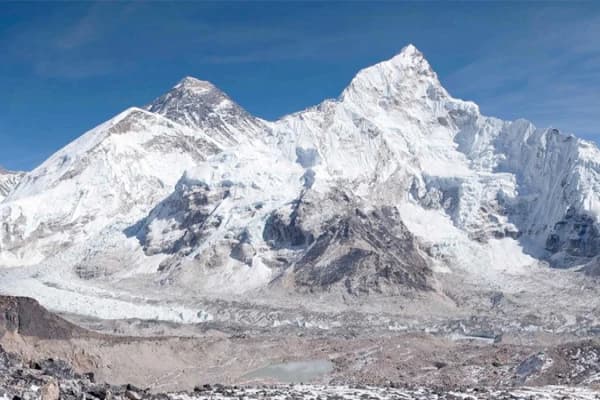The Manaslu Circuit Trek is an awesomely magnificent adventure around the huge Mount Manaslu, the eighth-highest peak in the world. It is also famous for its remote trails, rich cultural immersion, and beautiful landscapes. The trekking goes through traditional villages of Tibetan influence, green forests, and high terrains. This region is less visited than the Annapurna and Everest Regions but gives equally or even more spectacular mountain views with unparalleled exploration.
From understanding the map for the Manaslu Circuit Trek difficulty to securing the needed permits, this guide answers everything one needs to undertake upon this incredible journey.

Brief Overview of the Trek
The trek is one of the most breathtaking adventures to Nepal's Himalayas' most remote and untouched areas. It encircles the mighty Manaslu (8,163 m), the eighth-highest mountain in the world. The Manaslu Circuit Trek is located in the Manaslu Region and is a lesser-known but equally spectacular alternative to Nepal’s more famous treks.
If you want to see unbridled, raw, natural vistas, the Manaslu Circuit Trek should be at the top of your trekking in Nepal. This challenging trek offers natural beauty, cultural richness, and thrilling high-altitude landscapes that lure many adventure-seekers. It takes approximately 177 kilometers to circle the mountain and about 14–18 days at an average pace, depending on how many itinerary days and acclimatization days one wishes to take. The highlights are crossing the Larkya La Pass at 5,106 meters, the fascinating mixture of Hindu and Tibetan cultures, and the wild landscapes that change from lush green valleys to alpine zones.
This trekking routeIt has more hidden paths than other busier trekking routes and requires a special permit to enter the restricted area, called the Manaslu Circuit Trek permit. Combined with teahouse stays, the breathtaking Manaslu Circuit photos show the glory of this adventure. Conversely, the detailed Manaslu Circuit trek map will make this trek ideal for experienced trekkers who seek an exciting yet rewarding journey through the spectacular mountain peaks of Nepal.
Highlights of the Trek
- Larkya La Pass: At 5,106 m, the high Larkya La Pass is an exciting challenge and offers excellent, all-encompassing views of Manaslu and nearby Himalayan peaks.
- Authentic Cultural Experience: Communities like Samagaon give an insight into an authentic Tibetan-influenced culture, immersing in Buddhist rituals, ancient monasteries, and customs.
- Less Crowded Trails: Less-traveled trails out of the mainstream offer a serene environment to soak into an immersive trek away from the hustle and bustle of more popular routes.
- Scenic Diversity: The trek wound through lush forests and snow-capped mountains down to rice fields, showcasing Nepal's natural beauty at its finest.
- Manaslu Conservation Area Biodiversity: Enter a protected area of timid flora and fauna, including rare species such as the snow leopard and the red panda.
- Difficult Trek with Scenic View: The trek is arduous and is known for its rugged trails. In return, it promises a breathtaking panoramic view of the mountain ranges.
- Circuit Trek Permit: Only a few trekkers can enter this area, retaining its pristine wilderness and exclusive feel.
Recommended Read: Top 7 Reasons to Choose the Manaslu Circuit Trek

Why is the Manaslu Region a Restricted Area?
The Manaslu region is designated as a restricted area to preserve its fragile environment and unique cultural heritage. To minimize the impact of tourism and to protect the traditional lifestyle of the local communities, the Nepalese government requires special permits for entry. This policy also ensures controlled trekking and helps maintain the pristine nature of the region.
Why Trek in the Manaslu Region?
The Manaslu Circuit Trek offers an unparalleled experience for nature and culture enthusiasts. Here’s why it stands out:
- Unspoiled Beauty: Unlike more popular treks, the trails here remain less commercialized, offering serene and untouched landscapes.
- Cultural Encounters: The region is home to Tibetan-influenced communities, providing an opportunity to witness ancient Buddhist traditions.
- Diverse Terrain: From lush forests and terraced fields to glacial rivers and rugged mountain passes, the trek offers unmatched diversity.
How Long is the Manaslu Circuit Trek?
The Manaslu Circuit Trek typically takes 14–18 days, depending on your pace and acclimatization needs. The trek begins with a drive to Soti Khola and ends at Dharapani, covering approximately 177 kilometers (110 miles).
What is the Best Time to Visit Manaslu Circuit Trek: Seasons and Weather Conditions?
The best times to visit the Manaslu Circuit Trek are spring (March to May) and autumn (September to November). These seasons offer stable weather, clear mountain views, and comfortable trekking temperatures.
Each season has different landscapes and conditions that will play a huge role during your journey. Below, we discuss the four main seasons, their respective temperatures, and what you can expect in each period.
Spring (March to May)
Spring may be regarded as the ideal time for the trek. The temperature rises from 10°C to 20°C in the lower altitudes, making comfortable hiking possible. The trails become an accurate beholder of beauty when the snow melts, giving way to green valleys and rhododendron flowers blooming everywhere. The clear sky enhances the trekking experience with breathtaking views of the mighty Manaslu and the surrounding peaks.
Autumn (September to November)
Autumn weather is usually stable, with comfortable temperatures between 5°C and 15°C. This period just about marks the end of the monsoon, leaving the mountain scenery fresh, evident, and crisp for photography. The trails are less muddy, and there are fewer crowds than in the spring. It is the best time to enjoy the stunning scenery and experience the culture because many festivals occur.
Winter (December to February)
Winter brings about a complete change in conditions—temperatures fall from -10°C to 5°C at higher altitudes. While the circuit is accessible, it will be very challenging for trekkers to navigate the trails with snowfall and ice during this period. Winter landscapes look starkly beautiful, and the lack of tourists makes one feel, at times, utterly alone. However, this season should only be considered by experienced trekkers.
Monsoon (June to August)
The heavy rainfall and humidity usually characterize the monsoon season, with temperatures ranging from 15°C to 25°C. As a result, the trails become slippery, and visibility is poor, making trekking a bit difficult. However, this period provides an experience of its own for those undeterred by the rains: a result of fewer trekkers and bringing in entire green life into the landscapes due to the rains. Keep in mind that the trails can become challenging even for inexperienced trekkers.
For those seeking an even shorter, more unique trek, the Tsum Valley Short Trek is another fantastic option. This hidden gem offers a rich cultural and scenic experience while remaining relatively unexplored.
What Permits are required for the Manaslu Circuit Trek?
To trek the Manaslu Circuit, you’ll need the Manaslu Restricted Area Permit (MRAP), the Manaslu Conservation Area Permit (MCAP), and the Annapurna Conservation Area Permit (ACAP), as the trail partially overlaps with the Annapurna Region.
These permits help preserve the region’s natural beauty and cultural heritage. For more details, check out our comprehensive guide on Trekking Permits Guide.
Manaslu Conservation Area Permit (MCAP)
Entry into the Manaslu Region is controlled by issuing a Manaslu Conservation Area Permit to all trekkers, a precondition for the area's rich biodiversity and local conservation. The permit fee varies with time and nationality. Usually, a Manaslu Circuit Trek permit costs around NPR 2,000 for SAARC nationals and NPR 3,000 for other foreign nationals.
Annapurna Conservation Area Permit (ACAP)
The trek shares its route with the Annapurna region, so it also needs an Annapurna Conservation Area Permit. This permit is the backbone of all conservation activities in the Annapurna area. It costs approximately NPR 1,000 for SAARC nationals and NPR 2,000 for other foreign nationals.
Special Restricted Permit
Since the trek falls into the restricted area category, trekkers should obtain a Special Restricted Permit issued by the Department of Immigration in Kathmandu. This permit is essential in ensuring safety and regulating tourism within the region. The differentiation in the permit fee will depend on season one, trekking at approximately $100 per week for the first seven days and an additional $15 per day.
Solo Travel or Without a Guide is Possible in Manaslu Circuit Trek?
Solo travel or trekking without a guide is not permitted in the Manaslu Circuit Trek. The Manaslu region is classified as a restricted area by the Nepalese government, which enforces strict regulations to preserve the environment and the cultural integrity of the region. As part of these rules, trekkers are required to hire a licensed guide or porter-guide and travel in a group of at least two trekkers (excluding the guide).
The mandatory guide ensures proper navigation through the remote and challenging terrain, particularly in high-altitude areas like the Larkya La Pass, which can be dangerous for those unfamiliar with the region. Guides also facilitate obtaining the necessary permits, provide insights into local culture, and act as a crucial point of contact during emergencies.
While some trekkers may prefer the independence of solo travel, the requirement for a guide enhances safety and enriches the trekking experience. Licensed guides are trained to handle altitude-related issues, adverse weather, and other potential challenges, making the trek smoother and more enjoyable.
How to Get There: Transportation Options from Kathmandu
Private Jeep
Using a private Jeep is the fastest and most comfortable way to reach Soti Khola, generally the starting point of the trek, from Kathmandu. It's nice to have private Jeeps for groups. Jeeps can take in more space, and one can have their stops along the way whenever they want.
The drive usually takes 7-8 hours and costs about $150-200 USD, depending on the group size and season. Private Jeeps are good during the monsoon months and when the roads are bad.
Public Bus
The cheapest option is to take a public bus from Kathmandu to Arughat or Soti Khola. The ride is considerably longer (8 to 10 hours), and the buses will be complete. However, this option is a good deal if you would like to save a few dollars and experience how locals travel.
This would cost around NPR 600-1,000, but you will most likely change buses at Arughat for the final stretch upward towards Soti Khola.
Shared Jeep
A shared Jeep strikes the best balance in comfort and cost. Trekkers share Jeeps from Kathmandu to Soti Khola via Arughat and leave early in the morning. The shared ride costs approximately USD 20-30 per head and takes about 8 to 9 hours.
The shared Jeep may not precisely follow the schedule, leaving only when complete, so some flexibility with time is required.
What Are the Internet, Electricity, and Mobile Network Facilities in Manaslu Trek?
Internet connectivity in the Manaslu Circuit Trek is limited and often unreliable. While some teahouses offer internet services, it usually comes at an additional cost and may not function consistently, especially in remote areas. Electricity is generally available in most teahouses along the trek, but there is often a fee for charging electronic devices. It is advisable to carry a power bank for backup. Mobile network coverage is spotty throughout the trek, with only certain locations offering a signal. For better connectivity, trekkers should carry a local SIM card, such as Ncell or Nepal Telecom, though even these may have limited service in high-altitude or remote regions.
What is the Fitness Level Required for the Manaslu Circuit Trek?
Packing Essentials for Manaslu Circuit Trek
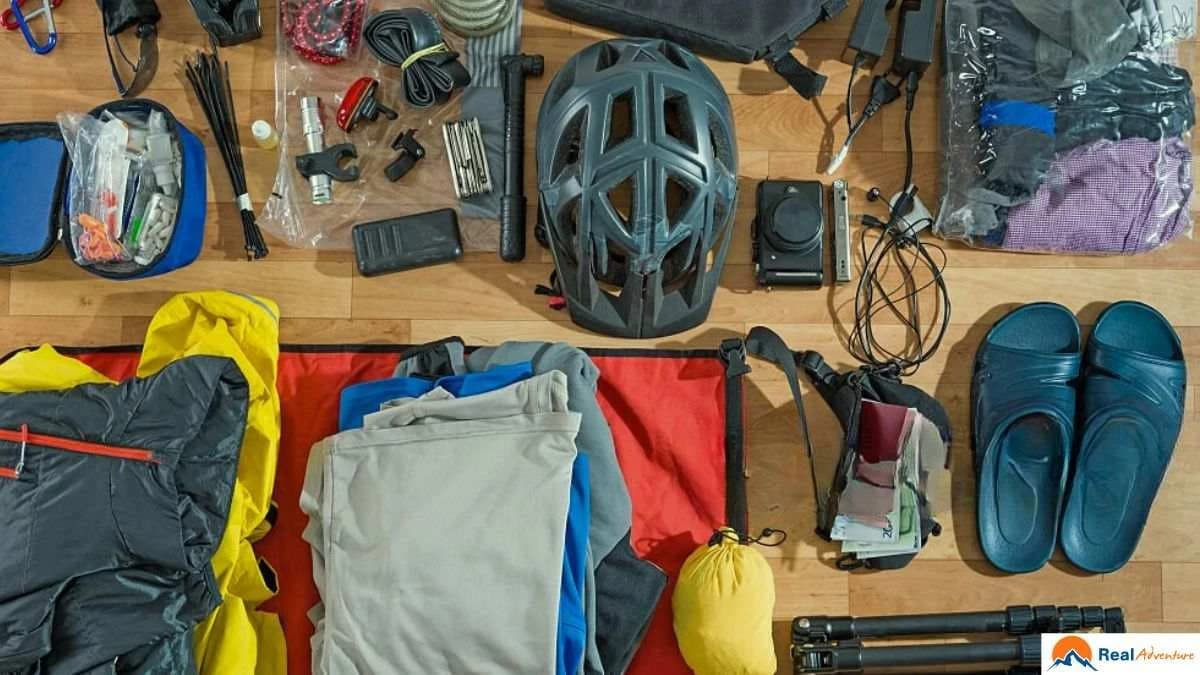
Clothing:
- Moisture-wicking base layers
- Insulating mid-layers (fleece or down jackets)
- Waterproof outer layers
- Trekking pants
- Warm socks
Gear
- Trekking poles for support
- Top-notch sleeping bag with cold-weather rating
- Headlamp for seeing at night
- Power bank for charging devices
- Landscape capture camera
First-aid Kit
- Adhesive bandages
- Antiseptic wipes
- Pain relievers
- Altitude sickness medication
- Personal medications
Food and Snacks
- Energy-boosting snacks (nuts, energy bars, dried fruits, chocolate)
Water Purification
- Purification tablets or water filter
Personal Items
- Biodegradable soap
- Toothbrush and toothpaste
- Toilet paper
- Small towel
- Hand sanitizer
Travel Documents: Permits and identification
- Manaslu Conservation Area Permit
- Annapurna Conservation Area Permit
- Special Restricted Permit for Manaslu
FAQs
What is the Manaslu Circuit Trek height?
The highest elevation of the Trek is the Larkya La Pass, which is 5,160 meters or 16,930 feet above sea level. While this offers a great view of the surrounding mountains, it also causes acclimatization problems. Trekkers are supposed to be physically prepared and take time to get accustomed to avoid altitude sickness.
How much does the Manaslu Circuit Trek price vary?
It costs from $1,000 to $1,800, depending on certain factors, including, but not limited to, trekking companies, the length of the itinerary, and the service level. Other costs that might change the overall price of the tour are permits, food, and transportation.
How difficult is the Manaslu Circuit Trek?
The trek is challenging due to its high altitude, rugged trails, and long days of trekking. It requires steep ascents, narrow paths, and fluctuating weather conditions. It would be suitable for well-fitted trekkers and those with some trekking experience.
Do you need oxygen to climb Manaslu?
Generally, supplemental oxygen is not needed on the trek. However, to safely manage extreme altitude and reduce altitude sickness risks, climbers attempting to summit Mount Manaslu from 8,163 meters usually use oxygen above 7,000 meters.
What is the Accommodation in the Manaslu Circuit Trek?
Accommodation is basic teahouse lodges with shared rooms. Facilities include communal dining areas and shared bathrooms. Bring a sleeping bag for extra warmth.
How Cold is the Manaslu Circuit Trek?
Temperatures vary by season and altitude:
- Spring/Autumn: 15–20°C during the day, dropping to -6°C at night at higher altitudes.
- Winter: Daytime temperatures range from 10–15°C, while nights can dip to -15°C or lower.
Final Thoughts
Manaslu Circuit Trek is a fabulous journey into the wilderness beauty of the Himalayas and its pulsating culture. From serene scenery to thrilling moments, especially crossing the awesomely beautiful Larkya La Pass, each day of the trek becomes an unforgettable adventure.
Whether you're an experienced trekker or eager to push your limits, the reasons for choosing the Manaslu Circuit Trek are clear. With Real Adventure Nepal, you can customize your trek to match your unique preferences and pace.
This journey, similar to the enriching experience of the Laya-Gasa trek, combines untouched nature and rich culture, leaving unforgettable memories that will stay with you for years.
Appropriately prepared for permits, gear, and fitness, trekkers can use the beauty and challenges of this trek to its fullest potential. If you are looking for a less crowded yet equally impressive destination than other trails, Manaslu Circuit holds all the treasures of nature, culture, and adventure.



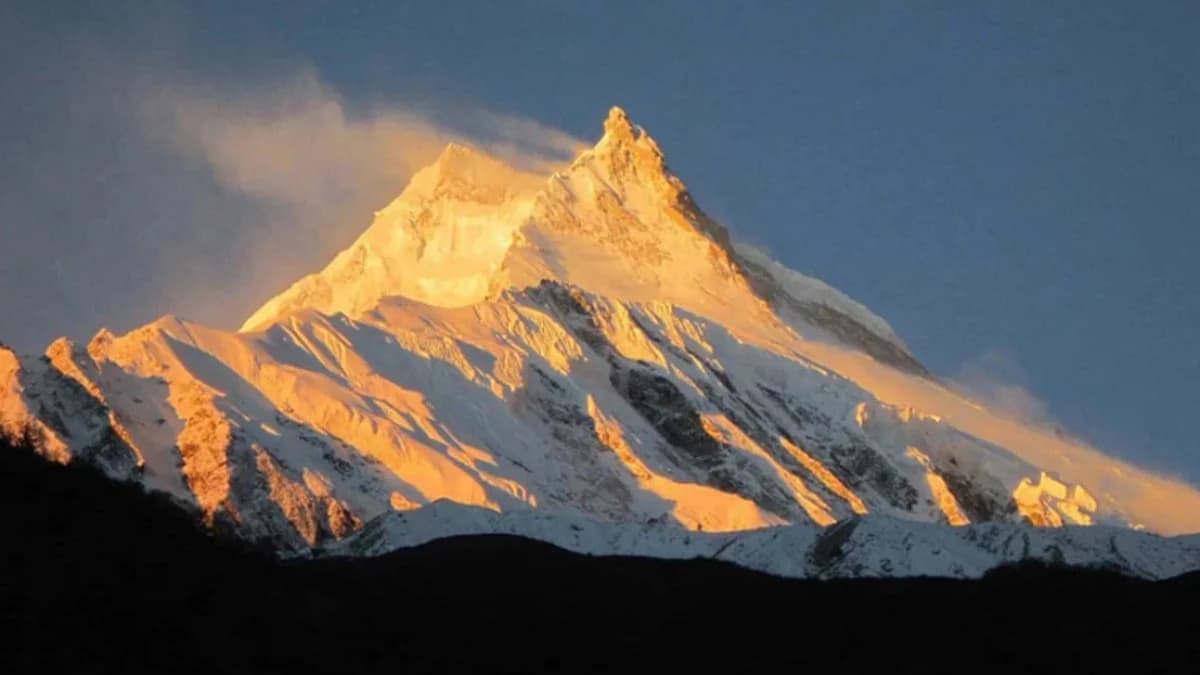

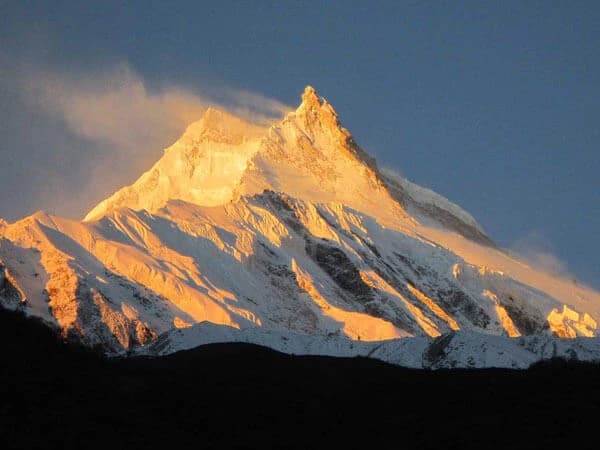
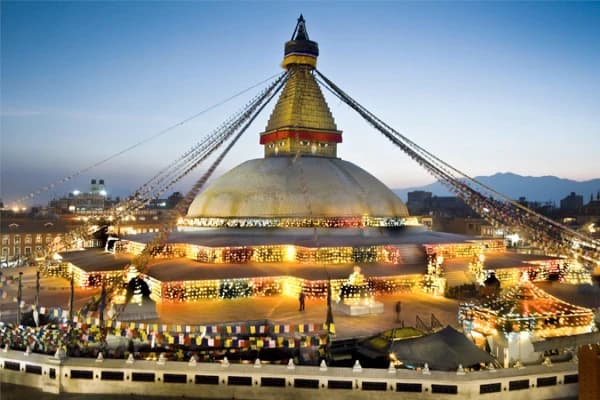
-(5).webp&w=1200&q=75&dpl=dpl_CtNAyRzUAwPdWKDCFxYk5p2VryPh)
